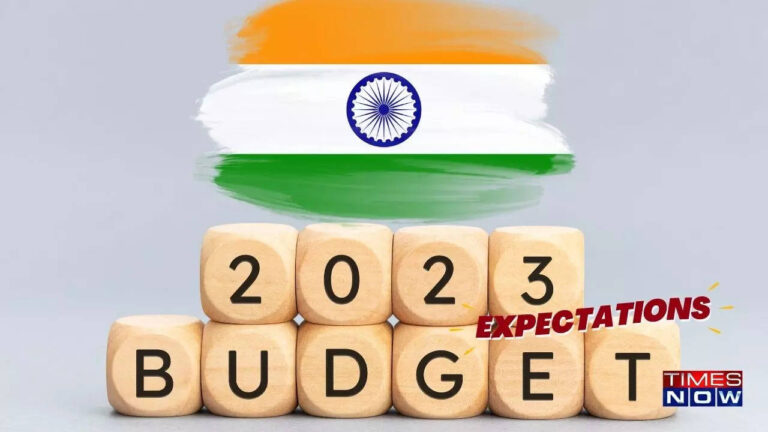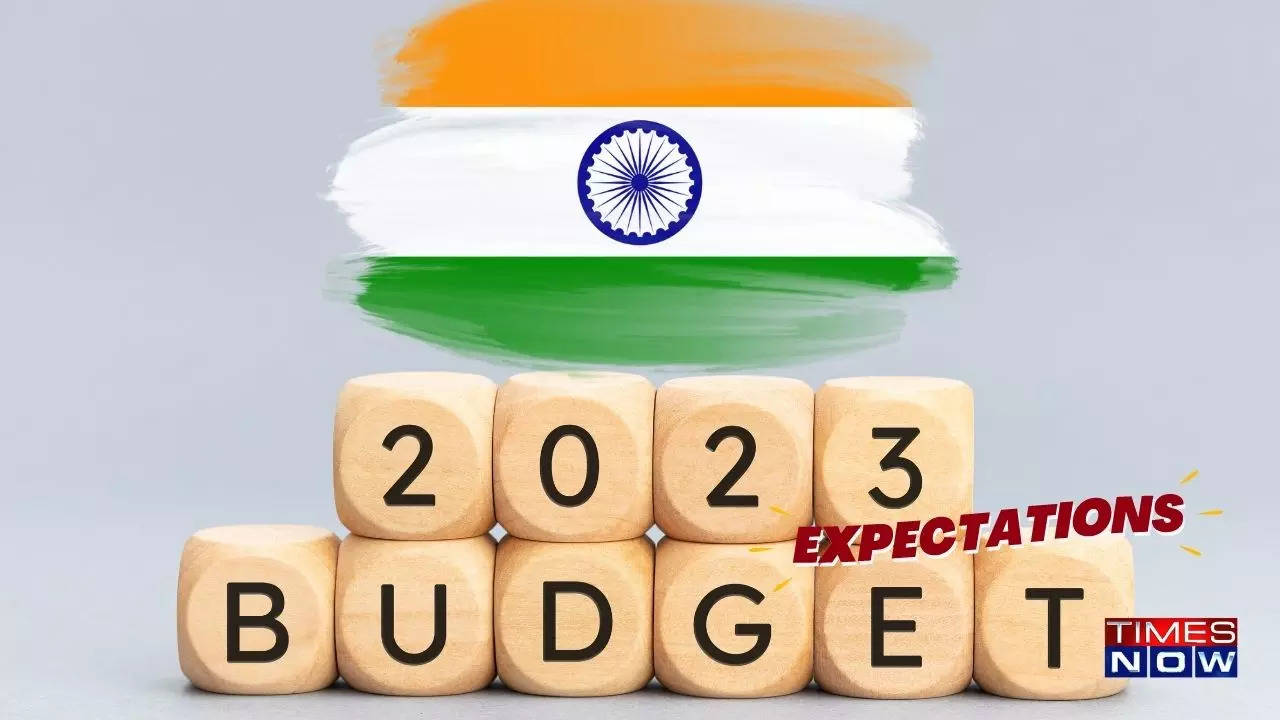

BUDGET 2023: Technology Industry Leaders Reveal Their Pre-Budget Expectations Ahead of Union Budget 2023-24
For the past two decades, India has been striving to become a tech superpower, and the Union Budget of 2023-24 is the perfect opportunity for the country to take a major leap forward. With a robust digital economy and the rollout of 5G services, the tech sector is looking forward to policies and provisions that will provide a much needed boost to the industry.
The industry expects the budget to provide an impetus to the government’s aim of a $5 trillion GDP by 2025. With India’s digital capabilities emerging as a global hub, the industry hopes for the budget to bring about fresh policies and other provisions that will spur growth and stability.
The sector is hopeful that the budget will provide the much needed boost to the tech industry, and ensure that India continues on its path of tech supremacy.
Leading industry figures have shared their expectations of the upcoming budget, and we have compiled some of these below.
Muneer Ahmad, Vice President, Sales and Marketing,
“The audio-visual industry is embarking a steady growth in recent years due to technological advancements, industry trends and consumer preferences. Projectors, monitors, interactive displays, and LED video walls are gaining significant momentum and are becoming an integral part of corporates and industries. In this upcoming budget, we expect the Government to reduce the duty on raw materials, electronic parts and components of sub-assemblies. Additionally, the Government should also consider relaxation on the GST rates. For instance, the projection category falls under 28% and IFPs under 18%. In the upcoming budget, we further hope that the Government will encourage the use of cutting-edge technology and boost education accessible for all. We anticipate seeing a more successful strategy in the future.”
Yuvraj Krishan Sharma, Co-Founder & CPO Edverse
“In the upcoming budget, the government should focus on promoting emerging technologies in the education sector and building a strong e-learning infrastructure. This includes the adoption of AI, AR, VR, ML, and metaverse, which can help improve overall learning, upskill, overcome geographical barriers, and create more job opportunities for the future generation.
The government should also emphasize mandating and investing in skill development, providing training in these technologies, exploring the possibilities of the metaverse, and offering subsidies for EdTech startups in areas such as R&D, tax incentives, and financial benefits.”
Hitesh Garg, India Country Manager,
“Over the last couple of years, the government has introduced many comprehensive programs like Specs, PLI, and DLI schemes, to incentivize and empower the semiconductor industry of the country. These programs have paved way for investments from Indian corporates and start-ups, further strengthening the semiconductor ecosystem.
In 2023, we expect the government to extend the scope of these incentive schemes or introduce new schemes to boost IP and product design, manufacturing and generate new employment opportunities for the semiconductor industry in India.”
Rajnish Gupta, VP & Head, India and Sub-Continent business,
“With initiatives like the National Logistics Policy, Gati Shakti amongst others, the Indian government is actively working towards increasing the efficiency of the logistics and warehousing industry through implementing the right technology. This will help raise India’s ranking in the Logistics Performance Index to among the top 25 countries, as per the Indian government’s goal.
In the upcoming Union Budget, measures like mandating the adoption of barcodes, RFID solutions, etc. will help digitalize the supply chain. It will help create greater transparency in the tracking and tracing of goods, enhance overall cost and time efficiency, reduce logistical turnaround time and promote greater tax compliance. With 99% of India’s logistical sector including small-scale warehouse owners, freight forwarders amongst others are still relatively unorganized, incentivizing digitalization will promote greater scalability in overall operations. As the Indian government aims to lower the logistical cost of its GDP from 13% to 8%, operational automation will be imperative in helping to accomplish this ambition.”
Ashok Rajpal, Managing Director,
“To encourage manufacturing, aka. Make in India; the government must provide subsidies and fiscal stimulus to the private sector. The reduction of corporate taxes and implementation of various PLI programs have boosted domestic manufacturing; however, the industry now needs a boost with additional Make in India plans and incentives for electronics manufacturers.
For indigenous production to continue perpetually, self-reliance on the required state-of-the-art technologies must be a key focus area. Being self-sufficient would imply manufacturing complete platforms, expanding in-house R&D capabilities, and so on. Increased budgetary allocations for R&D are required. Furthermore, some weighted deductions on R&D expenditure and tax breaks for industry players may prove to be drivers of the Indian manufacturing ecosystem. The industrial sector requires tax breaks and simplified legal procedures. Unnecessary legislation should be phased out, and compliance should be simplified. This will boost trust and confidence between the private and public sectors.”
Gokul Tandon, Group Executive Chairman,
“To aid pervasive adoption and derive benefits, it is proposed that a UCaaS/DWaaS Centric Mission Mode Initiative be created under DoT 5G taskforce, with active collaboration and participation from MEITY, Niti Aayog, and Ministries of Industry, Commerce, MSME and Skill Development – to boost our overall economic productivity and growth. This should be actively linked to the G20 Tech Innovation Taskforce being lead by India.
Furthermore, we recommend that the Digital MSME Initiative be revived and funded adequately to include UCaaS/ DWaaS elements and provide subsidies/grants to MSMEs to re-skill and re-tool themselves.”
Sharan Maini, Director Operations,
The country’s eco system for LED TVs and Washing machines has already started to develop, however, if PLI schemes are extended to these 2 products, the ecosystem for complete product manufacturing will develop faster and will inturn help to compete globally. Open Cells, which are not domestically produced, should have no taxes applied to them. The GST on LED TVs bigger than 32″ should also be decreased. These adjustments will boost the product’s demand, promote domestic production, and improve exports too. Schemes from the government are expected to push consumers towards more energy-efficient LED TVs & replace existing CRT TV homes.
Arjun Naik, Founder & CEO, ScanDron
As the fledgling Make In India Drone Industry takes flight, challenges remain in terms of import of critical components, finance and Insurance.
In the upcoming budget the industry needs support in terms of access to finance, insurance and a regularized import policy for critical components such as Batteries, Engines, Flight Control Electronics, Motors and Engines, which are still not available under Make in India. Standardised import policy for drone components will allow for faster technological adoption and Indianization of Drone components. Better and easier access to capital finance markets, liberalized investment policies and access to insurance will allow the Make In India drone industry to take major leaps towards maturing and becoming a sustainable mainstream industry.
Dr. Shreeram Iyer, Chairman and Group Chief Executive Officer,
As we are headed into a more digitalized age, the use of technology, particularly artificial intelligence, has increased several times over the past few years and will continue to receive more emphasis. The government has allowed the usage of face recognition in financial transactions and airports, as an additional layer of security. Due to the potential it possesses to bring major changes to standard of living, Prisma AI anticipates that the finance minister will allocate a greater overall budget towards AI and Technology for future ready solutions, which can include face-recognition based entry and ticket systems, ANPR plus GPS based tolls or turnstile activation, body posture estimation systems that can help in providing assistance to those in need or for general body-related analysis, automated highway management and much more.
Additionally, it can be expected that AI-powered medical technologies and devices will be funded which can help in curing ailments as well as various known conditions much faster. Prisma AI is innovating and developing its own share of advanced technologies and focusing on providing its globally acclaimed Visual AI Products and Solutions for the benefit of the Indian consumers.